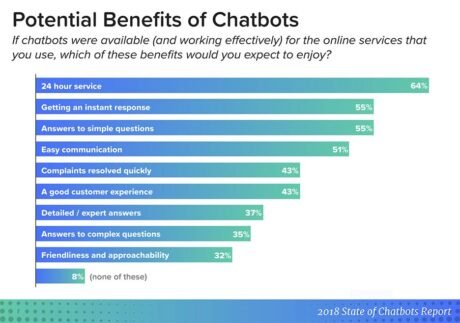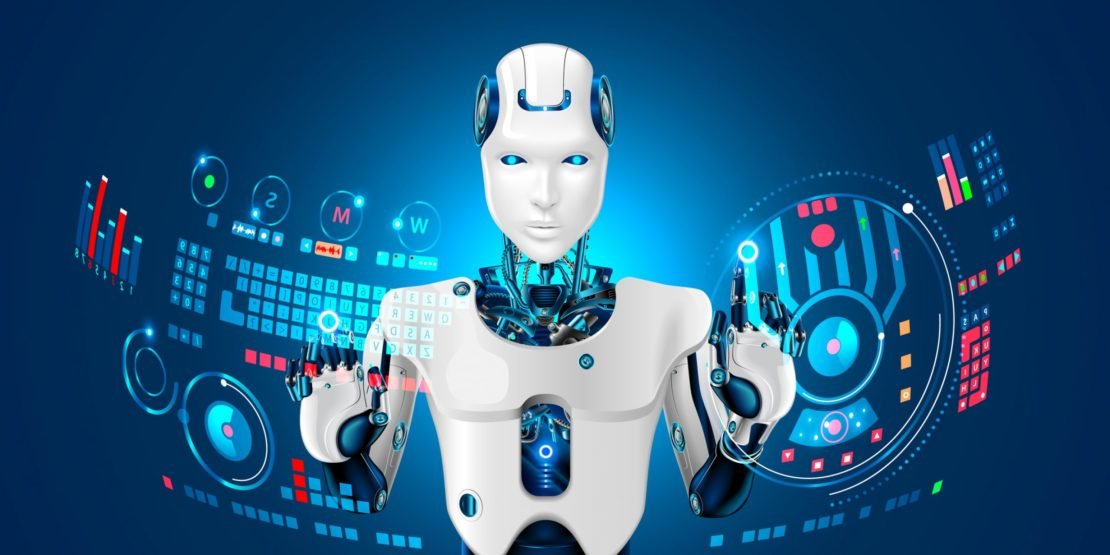Abstract
Today, the average campaign response rate is less than 1 percent and with the emergence of artificial intelligence (AI), traditional marketing is wading into troubled waters because the waves of strategic campaigns, the retargeting, the real-time media buying, and personalized emailing are not moving the marketing needle as they used to. The robotization of shopping and marketing is changing how brands compete for consumers. The real opportunity in marketing today lies in redefining the customer relationship rather than in cutting costs. In the future, humans might only be needed in the consumption phase of the buying cycle and purchasing decisions could be left to IoT-connected bots that order products for the customer. These products will then be delivered by anticipatory systems that understand when orders are to be made. For companies to succeed in this environment they need to make the marketing, ordering, and delivering process as seamless as possible, not just for the humans who will consume the products but also for the bots who will order them.
Key Words
Artificial Intelligence, customer engagement, personalization, machine learning, anticipatory shipping, customer relationship management, automated shopping, behavioral marketing
Introduction
A sea change is coming to the advertising world that threatens to radically alter the way marketers reach consumers and it won’t be a moment too soon because the sector currently boasts more than 5,000 unique marketing solutions[i], yet the average campaign response rate is less than 1 percent[ii]. The math – 99% of marketing messages are ignored and considered largely irrelevant – is disconcerting, to say the least. As the CRM, AI, and robotic process automation leader Pega Systems sees it, “With the emergence of artificial intelligence (AI), traditional marketing is wading into troubled waters – and practitioners don’t need a data scientist to feel a major shift coming.”[iii] Rob Walker and Matt Nolan of Pega recognize that the waves of strategic campaigns, the retargeting, real-time media buys, mobile push, personalized email are not moving the marketing needle as they did just a few short years ago.iii
Being number one has never been more important for marketers. Getting noticed on search – and in voice search – can help companies rise above the clutter. It’s never been easier to set up an ecommerce store so getting high up in the Google rankings is imperative to be discovered by interested buyers. It’s also imperative for companies to make their customers feel as they’re being treated like a VIP. While the concept of one-to-one marketing is two decades old, the technology needed to embrace it hasn’t been ready until now, says Pega.iii “Recent order-of-magnitude improvements in real-time interaction and AI capabilities have eliminated technology roadblocks, and the benefits of ‘doing it right’ are massive – increased engagement, response, customer satisfaction, retention, sales conversion, revenue, and profit margin, to name just a few,” contends Pega.iii Surgically striking offers to the market of one rather than blasting a shotgun of offerings to the uninterested many should be the goal of every marketing department today.
As Niraj Dawar explains in his Harvard Business Review article How Marketing Changes When Shopping Is Automated[iv], much of marketing is predicated on companies sending messages to customers through multiple marketing, mobile, and social channels to generate a purchase. “The largest advertisers in the world are companies such as Procter & Gamble, Nestlé, and Unilever, which sell branded low-involvement products that are routinely purchased and consumed at a regular pace,” says Dawar. iv However, there’s probably no more wasteful advertising than money spent on reminders for consumers to pick up basic items like toothpaste, coffee, laundry detergent, soap, pet food, and/or groceries. These fast-moving consumer products companies are spending tens of billions of dollars a year to keep their products top of mind. The hope is, when a consumer is short of a staple, memories of the brand he or she prefers will trigger a purchase.
Dawar envisions a future where retailers know their customers’ habits so intimately, they will mail, email, or even drone the 200 or so products the customers regularly consume, “based on when the retailers’ algorithms believe they require replenishment.”iv Once the IoT goes fully online, smart sensors and smart refrigerators will order directly from a retailers’ algorithms, saving the consumer the hassle of writing up shopping lists, remembering both which products to buy and/or which products are needed together.iv “Products will flow to the household like a utility,” says Dawar.iv Most purchasing decisions will be handled by a bot, and consumers will only need to consume.iv
In Humanizing Loyalty,[v] behavioral economist Susan Menke states “Decision fatigue and cognitive fatigue are the opposite of flow and seamlessness.” In her paper, Menke touches upon the concept of the psychological script — the idea that the mind doesn’t have to focus on many day-to-day activities as they can be handled without much thought.v The more seamless a company can make both the customer interaction and the buying process, the more likely a customer will not only purchase from it once but will repeatedly purchase from it.v The second purchase is usually the most important purchase a buyer can make. If businesses can lock down the second purchase, the buyer will often become a loyal customer, so companies should focus on making the second purchase as easy and thoughtless as possible.
In a connected world, spending billions to remind a consumer to buy a brand’s products will be deemed particularly wasteful.iv Instead, advertising dollars will be combined with CRM and customer loyalty budgets to help build long-lasting and rewarding customer relationships. “Challenging incumbents, increasing rates of consumption, and influencing algorithm designers and owners” should be the stated goal says Dawar.iv Influencing algorithms, in particular, will be prized, with a specific emphasis on becoming a native or default brand in the pre-installed software choice.iv
Out of laziness, fear of technology, or simply because of a user doesn’t understand the device, 90% of smartphones and PCs buyers don’t change their default settings, which presents a huge opportunity to those systems that become the default tools, contends Dawar.iv “As a result, incumbents will benefit from raised barriers to entry, and challengers, at least in routinely consumed product categories, will have to break through the inertia not just of consumers but also of programmed bots — a much tougher inertia to overcome,” says Dawar.iv This is a great opportunity for companies to become defaults brands. Utilizing marketing dollars to reach this goal is probably a better use of this money than trying to reach and retain the top of q consumer’s mind.
For Dawar, “brand loyalty will be redefined, forcing marketers to differentiate much more clearly between mere repurchase and actual loyalty. Marketers of incumbent brands will need to ask whether the algorithm is ‘loyal’ or the consumer is.” iv For challengers, they will need to figure out how they can convince consumers to change the algorithm’s default settings.iv
“Much of marketing strategy today rests on the idea that consumers are imperfect interpreters of advertising and marketplace information,” claims Dawar.iv However, that might be oversimplifying things. Buyers are certainly subjective to cognitive biases such as selective attention and retention of information, but the advertising industry is hardly innocent in its use of psychology to convince buyers to purchase the products it’s trying to sell – many times items that are not just unnecessary but superfluous. The advertising industry skillfully uses psychological methods such as the endowment effect, the foot-in-the-door technique, the framing effect, loss aversion, the decoy effect, the availability heuristic, and the scarcity principle to move its products. However, Dawar makes the argument that these techniques will become pretty useless when it’s a bot that needs to be converted. “If routine decisions are made by bots, not humans, marketers need to speak to the bots — and bots tend to do what they are told, without cognitive biases,” argues Dawar.iv Research should be “focused on understanding the points of influence of bots: What are their sources of data? Which criteria are they programmed to optimize? And what are their learning algorithms? Research on consumers will focus on strategic issues such as understanding consumption patterns and maintaining brand loyalty,” contends Dawar.iv
The Power of Persuasion
So, how does one increase brand loyalty and improve brand recognition? In his influential Harvard Business Review paper Harnessing the Science of Persuasion[vi], Robert B. Cialdini looked at the science behind the power of persuasion and discovered that “persuasion works by appealing to a limited set of deeply rooted human drives and needs, and it does so in predictable ways. Persuasion, in other words, is governed by basic principles that can be taught, learned and applied.” Cialdini’s six principles are:vi
- Like: People like those who like them.
- Reciprocity: People repay in kind.
- Social proof: People follow the lead of similar others.
- Consistency: People align with their clear commitments.
- Authority: People defer to experts.
- Scarcity: People want more of what they can have less of.
For reciprocity, people give what they want to receive, and it is the number one thing that creates loyalty in another person. Reciprocity has been appraised and debated since the days of Aristotle and many scholars believe it is the single most defining aspect of social interaction that keeps society together. Reciprocity doesn’t have to be a bar of precious metal, like some casinos in Macau use to entice high rollers to return, it can just be the acknowledgment of poor customer service along with a promise to do better the next time.
In terms of reciprocity, a 2002 research found a waiter’s tips increased by a paltry 3% when diners were given an after-dinner mint, but went up to 20%, when the server delivered the mint while looking the customer in the eye and telling them the mint was specifically for him or her.viii
For the principle of social proof, people tend to follow the lead of similar others.vi Whenever available, people use peer power.vi Cialdini adds “Social creatures that they are, human beings rely heavily on the people around them for cues on how to think, feel, and act.”vi Persuasion can be particularly effective when coming from peers.vi Testimonials from satisfied customers, in particular, “work best when the satisfied customer and the prospective customer share similar circumstances” argues Cialdini.vi
In his Fast Company article How to use the psychology of social proof to your advantage[vii], Ed Hallin argues “A lot of things go into a person’s decision to purchase a product, and social proof is certainly one of those important factors.”vii 70% of consumers say they look at product reviews before making a purchase, says Hallin, and product reviews, to no one’s surprise, are 12-times more trusted than product descriptions from manufacturers.vii
For the principle of consistency, liking is a powerful force, states Cialdini, but persuasion involves more than simply making people feel warmly towards you, your brand, idea, or product.vi Liking isn’t enough, people need to feel committed enough to do what you want them to do.vi Good turns are one way to generate feelings of obligation, another is to win a public commitment, which is what brands should do in an active, public, and voluntary way.vi It is possible to do this in a non-exploitive way.
In his Buffer article 15 Psychological Studies That Will Boost Your Social Media Marketing[viii], Kevan Lee detailed a Princeton researchers study that depicted the consistency principle. The “researchers asked people if they would volunteer to help with the American Cancer Society. Of those who received a cold call, 4 percent agreed. A second group was called a few days prior and asked if they would hypothetically volunteer for the American Cancer Society. When the actual request came later, 31 percent agreed.”viii
The marketing takeaway here is for brands is to create expectations for what customers and potential customers should say and/or do. For instance, a brand that sells online marketing courses should aim to get users to opt-in to a marketing course and offer tools used by marketing experts. Subscribers may wish to stay consistent with their stated goal of improving their marketing skills and they will then sign up for recommended tools because they fall in line with their expectation to improve their marketing skills.viii
For the principle of authority, people defer to experts, so brands should project their expertise.vi In one sense the influencer craze reflects this principle. One could argue that influencers aren’t exactly experts in their field, but influencers are looked upon as people who know about a particular product and service than the general public.
According to Investopedia, the scarcity principle is the “economic theory in which a limited supply of a good, coupled with a high demand for that good, results in a mismatch between the desired supply and demand equilibrium.”[ix] Also known as the ‘Fear of missing out’ syndrome, the scarcity principle plays upon the idea that people covet scarce things. As Investopedia explains, “Consumers place a higher value on goods that are scarce than on goods that are abundant. Psychologists note that when a good or service is perceived to be scarce, people want it more. Consider how many times you’ve seen an advertisement stating something like: limited time offer, limited quantities, while supplies last, liquidation sale, only a few items left in stock, etc. The feigned scarcity causes a surge in the demand for the commodity.”ix
Engagement and Loyalty
So how should brands use these six principles? They should start with engagement and the usual marketing tools like CRM, marketing automation, real-time marketing, Next Best Offer, and Next Best Action platforms while adding AI into the mix. As Lovelock and Wirtz state in Services Marketing, People, Technology, Strategy[x], “from a customer perspective, well-implemented CRM systems can offer a unified customer interface that delivers customization and personalization.” For Lovelock and Wirtz, at each transaction point relevant patron data like a customer’s personal preferences, as well as his or her overall historical transactions should be available to a clerk or rep serving a customer, giving them valuable information about how to interact with that person.x
The Hotel Engagement and Loyalty Platform (see Figure 1) shows how a hotel would engage its customers in a loyalty platform that utilizes social media as an important channel of the process. The platform can be implemented in a multitude of ways. In the Listening part, a hotel would define triggers and set up a product like Adobe’s Marketing Cloud to cull Twitter, Facebook, Instagram, or a whole host of social site feeds for tweets, photos, hashtags, keywords, likes, or video views about the hotel property. AI can be used to qualify and metatag the hotel’s content so anytime a photo of the place is posted, Adobe’s AI tool, Sensei, will peg it and notify the marketing department of its use. This is helpful for the hotel to understand how far and wide the hotel’s marketing message is going.


Figure 1: The Hotel Engagement and Loyalty Platform
Source: chirpify.com
Check-ins and geo-posts from sites like Facebook, WhatsApp, WeChat, Foursquare, Instagram, and YouTube, as well as a whole host of other social networks, can help brands connect with nearby audiences. Brands should also be listening to comment boards or short-term blogging sites like Tumblr or social news aggregation sites like Reddit for comments about their products and services.
The Rules Engine step is pretty straightforward; brands are already creating considerable business rules for their companies, and these should be extended to their defined rewards program, their reward economy, and the marketing of the loyalty program. Rewards programs are costly to implement and difficult to maintain. Each reward point has a monetary value and, therefore, must be quantified on a budget whether it is used or not, so quantifying everything properly is imperative.
Building a rules engine can streamline the marketing process. The brand must document who gets what, when, and/or how he or she gets it, as well as if approval is needed, and through which channel an offer gets delivered. With mobile and social added to the customer channel mix, things are going to get exponentially more complex very quickly, so building a rules engine that lays out things in a highly definable way to interact will optimize the entire customer process.
Once the rules engine is set, automation must kick in. With even small brands now handling databases filled with millions of customers, it would be impossible to market to a customer database without considerable automation going on behind the scenes.
With the real-time personalization capabilities available today, brands can quickly understand who is accepting their marketing and how much revenue it is driving. Adding a real-time element to the process would be impossible without setting strict rules in place and utilizing powerful marketing automation tools that not only send out marketing offers but also quantify them once they are used.
In terms of marketing and customer service, Facebook bots can be created and automated to answer standard customer service questions, and this should lessen the load on a brand’s customer service department. Moderated boards and UGC content, such as Instagram, Facebook, Twitter, or YouTube posts are great ways to market to customers and/or potential customers. They are also good listening channels to pick up customer service compliments and complaints and competitive intel.
As Chirpify sees it: “Moderation allows brands to increase social efficiency and effectiveness by uniting automated listening triggers while giving moderators the ability to manually review posts and user content for fit before determining their qualification for a reward.” Brands can better personalize each reward based on the user’s profile while ensuring each reward will be appreciated by the customer.[xi] “Conversation with customers will increase sales, even if the product or service is never mentioned,” counsels George Farris, founder of Farris Marketing
Messaging is the fifth step, and this includes email and social media messaging being used to market to the consumer. This step can include chatbots. Dubbed the greatest customer service technology around, chatbots are everywhere. Four years ago, Gartner[xii] saw this revolution coming, saying that by 2020 the average person would “have more conversations with chatbots than with his or her spouse.” Chatbots are ubiquitous, even if we can’t see them. Most Fortune 500 companies use them, but they aren’t just for large and mid-size companies. Chatbots have become so cheap to implement that even small businesses have embraced them. Leftronic[xiii] reports that 71% of companies with chatbots have between 1 and 50 employees.
There are two types of chatbots – transactional and conversational. The former provides customers with a pre-programmed set of choices, while conversational chatbots utilize AI to understand and respond to customers in natural, human-like ways. Advances in AI, machine learning, Natural Language Processing (NLP), and deep learning have led to the creation of highly intelligent AI chatbots. These interact with people intelligently, often in a natural, human-like way.
In its Best AI Chatbot – 7 Smartest AI chatbot in 2021[xiv], Designveloper claims the Imperson platform is one of the most intelligent AI Chatbot platforms available and it can support text, audio, video, AR, and VR on all major messaging platforms. Customer behavior is identified through AI and appropriate responses are delivered in real-time says Designveloper.xiv Chatbots can collect leads, raise brand awareness, answer simple questions, provide expert answers, and promote brand messaging platforms like Facebook, WhatsApp, WeChat, Telegram, and others (See Figure 2).


Figure 2: 2018 State of Chatbots Report
Source: Drift.com[xv]
Complicated chatbots are really where it’s at and there are several chatbots platforms available in the market that do everything from utilizing IoT, social, and geolocation data. Some connect to databases and then provide on-the-fly information to consumers and/or salespeople. Google Assistant even lets UPS customers track their packages over voice. The UPS My Choice App learns to recognize the customer’s voice and when talking to the app’s chatbot, the customer doesn’t have to provide any tracking number or personal information as the chatbot automatically recognizes him or her. This is a great example of how a company can make its service process so seamless that customers will think twice about switching to a competitor.
Chatbots partner well with blockchain as well and the use cases are building by the day. In her article Why Chatbots Need Blockchain[xvi], Aurosikha Priyadarshini explains how chatbots and blockchain work together in the warranty sector – whenever a client makes a purchase, a guarantee coupon containing a unique blockchained QR-code is sent to them. The QR Code “includes general information like the product’s name, purchase date, and serial number, along with the address of the chatbot that is operating on the Facebook Messenger Platform.” Upon receiving the picture of the QR-code, the chatbot logs the purchase information, while the customer’s Facebook profile is included as the personal identifier.xv This entire process is seamless and saves the seller’s time as well as adds a layer of security into the loop that will be recognized by the client. Combining “blockchain technology with chatbots helps in the creation of a safe and reliable system with a UI-friendly and straightforward interface,” concludes Priyadarshini.xv
For businesses, chatbots can drive customer engagement, improve the customer experience, help cross- and up-selling, provide stock or insurance quotes, and reduce customer churn. One of the most important things chatbots can do is create a one-to-one marketing experience for every customer. It can help customers find what they want, give them prices or stock information about the items they want, as well as accept payments and send the order to fulfillment. Chatbot assistants can help with shopping and NLP-powered chatbots can understand customer sentiment, then act on it.
In her Information Week article, The State of Chatbots: Pandemic Edition[xvii], Jessica Davis states, “The biggest use cases for chatbots right now are customer service, IT service desk, and HR, but there are many other specialized use cases, too.” One example Davis notes is that of bot that was “deployed by a credit union in the northwestern United States in April when stimulus checks were on the way.”xvi The organization created a simple bot that answered basic questions about a person’s checks – was one coming, had it arrived, when would it clear?xvi Such a bot was extremely valuable the huge spike in customer service calls asking about checks but was useless once the stimulus check wave was over.xvi “The push to automate, particularly in the current pandemic environment, is helping to drive growth. Some companies are employing a grow-with-automation first mindset where they deploy chatbots and other automation tools first before they consider hiring humans,” contends Davis.xvi
Rewards and marketing content can deliver the usual points, discounts, and offers, but today something known as “social rewards” is proving to be a unique way to connect with an audience that has seen everything in terms of rewards programs. In his article Getting it right: mixing social and economic rewards in hotel loyalty programmes[xviii], Lee Jin-soo argues common examples of economic benefits for hotels will include free rooms, free upgrades, and other discounts. However, social benefits are more diverse and include preferential treatment or personalized recognition and unique customer attention.
In a survey of 334 participants conducted by the School of Hotel and Tourism Management at the Hong Kong Polytechnic University found a social reward dominant program was “more effective than an economic reward oriented program in encouraging favourable relational behaviours toward programme providers,” states Jin-soo.xvi The study concluded that financial incentives alone wouldn’t prevent customers from switching over to a competing program.xvi To foster relational behaviors and gain long-term benefits from a loyalty program, hotels needed to consider offering both social and economic rewards.xvi
n
A campaign management solution can enable a brand to develop and manage personalized customer communications strategies as well as orchestrate the delivery of offers through a multitude of channels. Users can rapidly create, modify, and manage multi-channel, multi-wave marketing campaigns that integrate easily with social channels or fulfillment channels, automatically producing outbound and inbound response history. Target segments can be defined, selection rules prioritized, while campaigns can be scheduled and executed. Advanced analyses can then help predict patterns of use and evaluate the success of the entire marketing process.
The customer journey starts a long time before the customer even connects with a brand. It begins the moment a potential customer browses to a brand’s webpage or notices an advertisement for the company on television, or on a website, or in print, or on a billboard. It can even be while connecting with a brand’s social media accounts, or even the moments leading up to a customer’s purchase. Throughout this entire customer journey, the brand’s data warehouse should be collecting, analyzing, visualizing, and then, potentially, live stream recommendations and/or offers to those who might utilize them all to strengthen the bond between the company and the customer.
The Start of a Beautiful Relationship
On March 3, 2021, Google announced[xix], it would no longer allow third-party cookies on its ad networks and its chrome browsers. In effect, Google agreed to stop “selling web ads targeted to individual users’ browsing habits,” explains Sarah Morrison in her article Google is done with cookies, but that doesn’t mean it’s done tracking you.[xx] Google Chrome will no longer allow cookies that collect this data, while ad companies relying on cookies will have to find other ways to target users.xviii
Third-party cookies have been used since the early days of the internet to collect data on browsers to track their movements from website to website. It’s why Google ads are so effective. Users who visit Travelocity to search for a holiday in Thailand and don’t buy that trip will often see ads for a trip to Phuket that is suspiciously similar to the one he or she had just been searching for previously. Google’s ad business has been powered by the third-party cookies on millions of websites that feed the company massive amounts of user information about the sites they visit, says Morrison.xviii However, Google saw the privacy writing on the wall and recognized it had to adapt. This is where Google’s Federated Learning of Cohorts (FLoC) comes in says Chetna Bindra in her article Building a privacy-first future for web advertising.[xxi]
With FLoC, Chrome keeps track of a user’s browsing habits across the web and then places the user in various audiences, or “cohorts,” based on those habits. “Advertisers will then target their ads to cohorts, rather than an individual user,” says Bindra.xix Google still delivers targeted ads to users, but in a more anonymous way.xix Google claims this has little effect on an advertiser’s ROI compared to cookie-based tracking, and it is currently testing FLoC with advertisers to see if it’s a worthy cookie replacement, but questions about the effectiveness remain.xix Who knows what the future holds for FLoC, but Google is at least confident enough in it to declare the death of cookies, which should be additional motivation for companies to realize that the advertising times, they are a’ changing.
Google still plans to collect first-party data through its products like YouTube and Search says Rani Molla[xxii], and it will target ads based on that information. Perhaps this is the biggest lesson from Google’s announcement – first-party data is becoming increasingly valuable to advertisers as third-party data sources dry up. The bigger point here is companies need to develop those one-to-one relationships with their customer like Google has with its search and YouTube users.
“The robotization of shopping and marketing changes how marketers and consumers interact and how brands compete,” says Dawar,iv who believes the real opportunity lies in redefining the customer relationship rather than in cost-cutting.iv In the future, humans might only be needed in the consumption phase and we’ll leave our purchasing decisions to an IoT-connected bot that orders what we need when we need it. It might be high time for companies to realize the future lies in making it as seamless not just for humans to order from them but also a bot.
[i] Chief Marketing Technologist Blog, Scott Brinker (2017), http://chiefmartec.com/2017/05/marketing-techniology-landscape-supergraphic-2017/ (Accessed 19 March 2021).
[ii] Direct Marketing Association, 2017 Response Rate Report (2017) https://thedma.org/marketing-insights/responserate-report/
[iii] Walker, Rob and Nolan, Matt. 2017. Pega. Crossing the chasm: From campaigns to always-on marketing. https://www.pega.com/system/files/resources/2019-11/Pega-Crossing-The-Chasm-Whitepaper.pdf (Accessed 18 March 2021).
[iv] Dawar, Niraj. Harvard Business Review. How Marketing Changes When Shopping Is Automated. October 14, 2016. https://hbr.org/2016/10/how-marketing-changes-when-shopping-is-automated (Accessed 3 March 2021).
[v] Humanizing Loyalty, A road map to establishing genuine emotional loyalty at scale. Olson1to1.com. https://go.icf.com/rs/072-WJX-782/images/Humanizing%20Loyalty%20-%20Olson%201to1.pdf (Accessed 6 June 2019).
[vi] Cialdini, Robert B. Harnessing the Science of Persuasion. Harvard Business Review. October 2001. http://www.coachfinder.club/downloads/Influence%20by%20Cialdini.pdf (Accessed 15 August 2018).
[vii] Hallin, Ed. (2014). Fast Company. How to use the psychology of social proof to your advantage. 05 May 2014. https://www.fastcompany.com/3030044/how-to-use-the-psychology-of-social-proof-to-your-advantage (Accessed 14 August 2018).
[viii] Lee, Kavan. Buffer. (2014) Psychological Studies That Will Boost Your Social Media Marketing. 17 November 2014. https://blog.bufferapp.com/psychological-studies-marketing (Accessed 14 February 2019).
[ix] https://www.investopedia.com/terms/s/scarcity-principle.asp (Accessed 11 March 2019).
[x] Lovelock, C. a. (2010). Services Marketing, People, Technology, Strategy, Seventh Edition. Prentice Hall.
[xi] https://www.chirpify.com/announcing-chirpify-moderation-brands-can-now-moderate-social-triggers/ (Accessed September 7, 2017).
[xii] Levy, Heather. Gartner. Gartner Predicts a Virtual World of Exponential Change. Gartner.com. October 18, 2016. https://www.gartner.com/smarterwithgartner/gartner-predicts-a-virtual-world-of-exponential-change/ (Accessed 17 March 2021).
[xiii] https://leftronic.com/chatbot-statistics/ (Accessed 17 March 2021).
[xiv] Designveloper. March 12, 2021. Best AI Chatbot – 7 Smartest AI chatbot in 2021. https://www.designveloper.com/blog/best-ai-chatbot-smartest-ai-chatbot/ (Accessed 17 March 2021).
[xv] https://www.drift.com/learn/chatbot/ (Access 21 July 2021)
[xvi] Priyadarshini, Aurosikha. Why Chatbots Need Blockchain. Chatbotslife.com. Oct 23, 2019. https://chatbotslife.com/why-chatbots-need-blockchain-8afc242232e#: (Accessed 17 March 2021).
[xvii] Davis, Jessica. Information Week. The State of Chatbots: Pandemic Edition. September 10, 2020. https://www.informationweek.com/big-data/ai-machine-learning/the-state-of-chatbots-pandemic-edition/d/d-id/1338841 (Accessed 21 July 2021).
[xviii] Lee Jin-soo. 24 March, 2017. Getting it right: mixing social and economic rewards in hotel loyalty programmes. South China Morning Post. http://www.scmp.com/business/companies/article/2081624/getting-it-right-mixing-social-and-economic-rewards-hotel-loyalty (Accessed 21 July 2021).
[xix] Temkin, David. Google. Charting a course towards a more privacy-first web. Google. March 3, 2021 https://blog.google/products/ads-commerce/a-more-privacy-first-web/ (Accessed 17 March 2021).
[xx] Morrison, Sarah. Vox.com. Google is done with cookies, but that doesn’t mean it’s done tracking you. March 3, 2021. https://www.vox.com/recode/2021/3/3/22311460/google-cookie-ban-search-ads-tracking (Accessed 17 March 2021).
[xxi] Chetna Bindra. Google.com. Building a privacy-first future for web advertising. Jan 25, 2021. https://blog.google/products/ads-commerce/2021-01-privacy-sandbox/ (Accessed 17 March 2021).
[xxii] Morrison, Sara and Molla, Rani. Vox.com. Google Chrome’s cookie ban is good news for Google — and maybe your privacy. January 16, 2020. https://www.vox.com/recode/2020/1/16/21065641/google-chrome-cookie-ban-advertisers (Accessed 18 March 2021).











1 responses on "The Automation of Marketing"
buy cialis uk What Types of Co Occurring Disorders Exist With Steroids